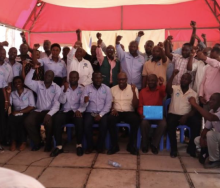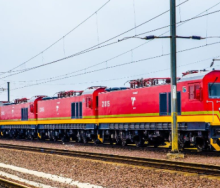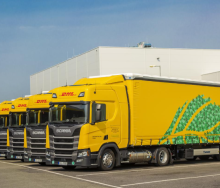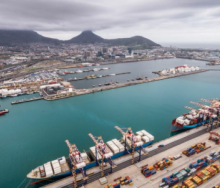The launch of the world’s biggest hydrogen-powered truck at Anglo American’s Mogalakwena PGMs mine in Limpopo last week heralds a new era for mining in South Africa.
Speaking at the opening of the ‘Investing in Africa Mining Indaba’ in Cape Town on Monday, Minister of Mineral Resources and Energy Gwede Mantashe said this was not just a source of great pride for the mining sector, but a giant leap for the country’s hydrogen economy.
The 2MW hydrogen-battery hybrid truck, generating more power than its diesel predecessor and capable of carrying a payload of up to 310 tons, is part of Anglo American’s nuGen Zero Emission Haulage Solution (ZEHS), providing a fully integrated green hydrogen system consisting of production, fuelling and haulage system, with green hydrogen to be produced at the mine site.
“This prototype heralds a new era,” said Mantashe. “We will be seeing fleets of these trucks at mines across South Africa in the future. This is one of the first projects unlocking the country’s hydrogen future and is leading the way to the future.”
He said Africa’s rich endowment of new energy minerals held great potential for the continent. The decision by Anglo American to launch its prototype in Africa was further proof that mining in Africa was of global importance.
“This launch has been done here in Africa, this truck is working here in Africa, investors are coming here to Africa. This is where the future of mining is. Africa is going to determine where we go in the future thanks to its rich resource endowment.”
Anglo American’s innovation-led approach to sustainable mining, which brings together technology and digitalisation to drive sustainability outcomes, was important for the mining sector at large, said Mantashe, who indicated that it was critical for mining to be exploited but not at the cost of the environment.
After an absence of two years due to the ongoing global Covid-pandemic, the Mining Indaba kicked off on Monday morning in Cape Town with the overarching theme, ‘Evolution of African Mining: Investing in the Energy Transition, ESG and the Economies’.













